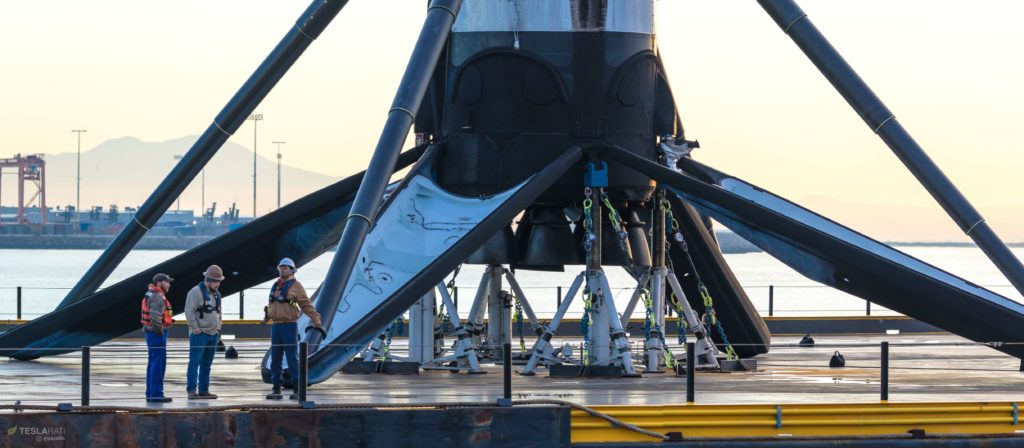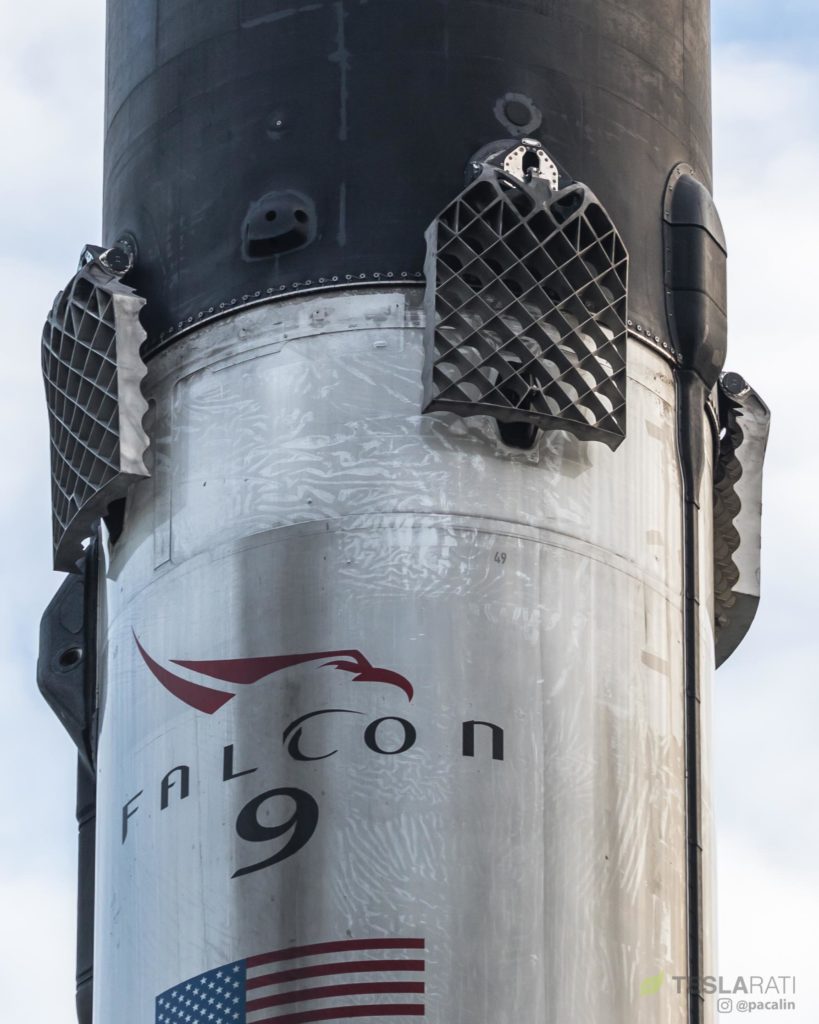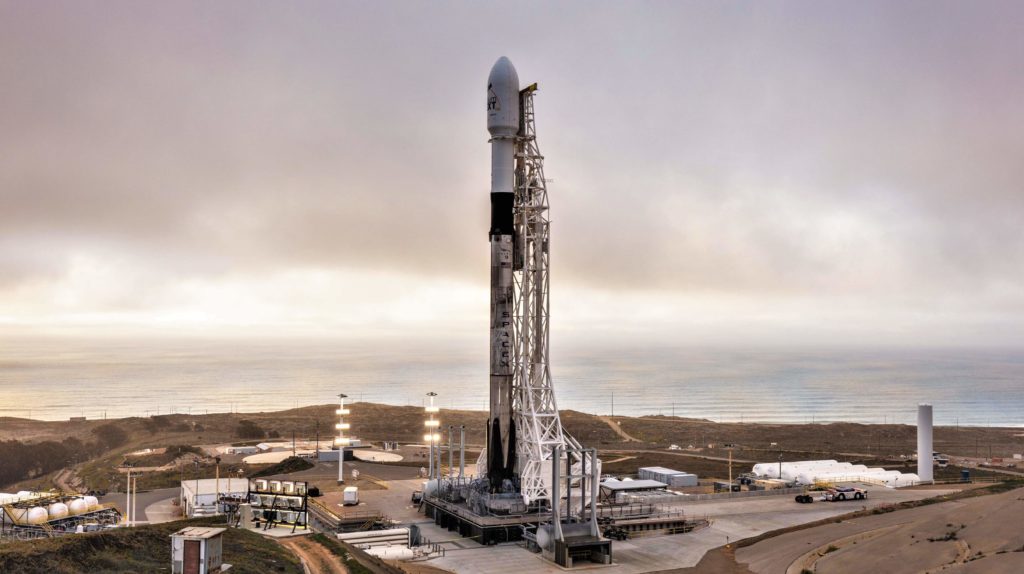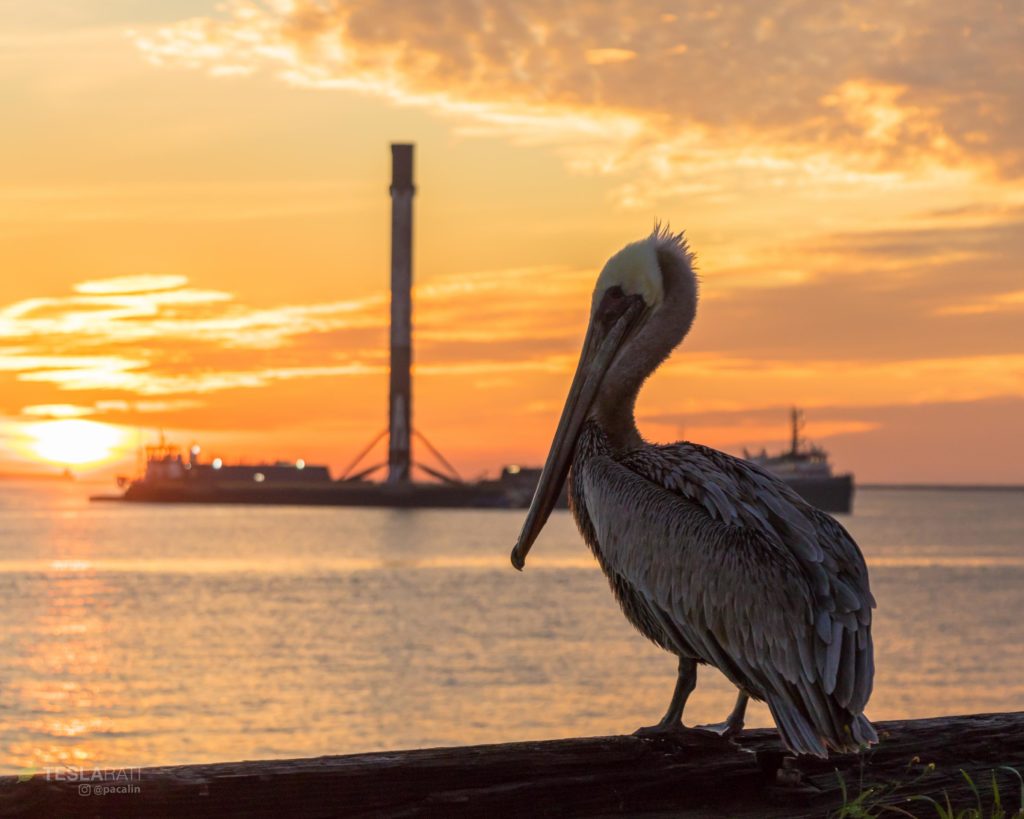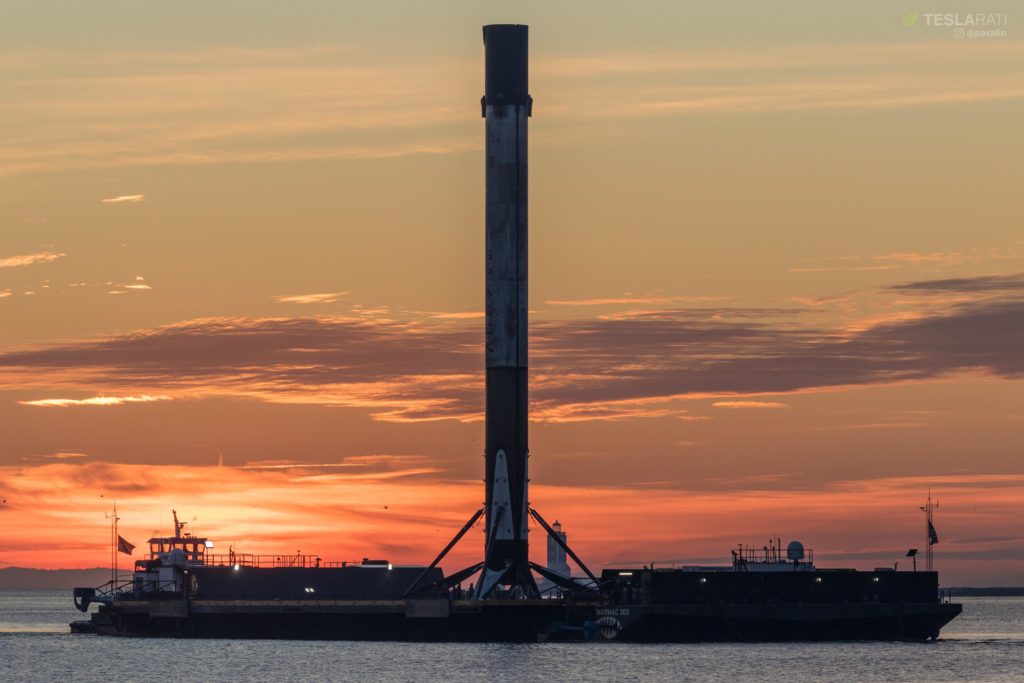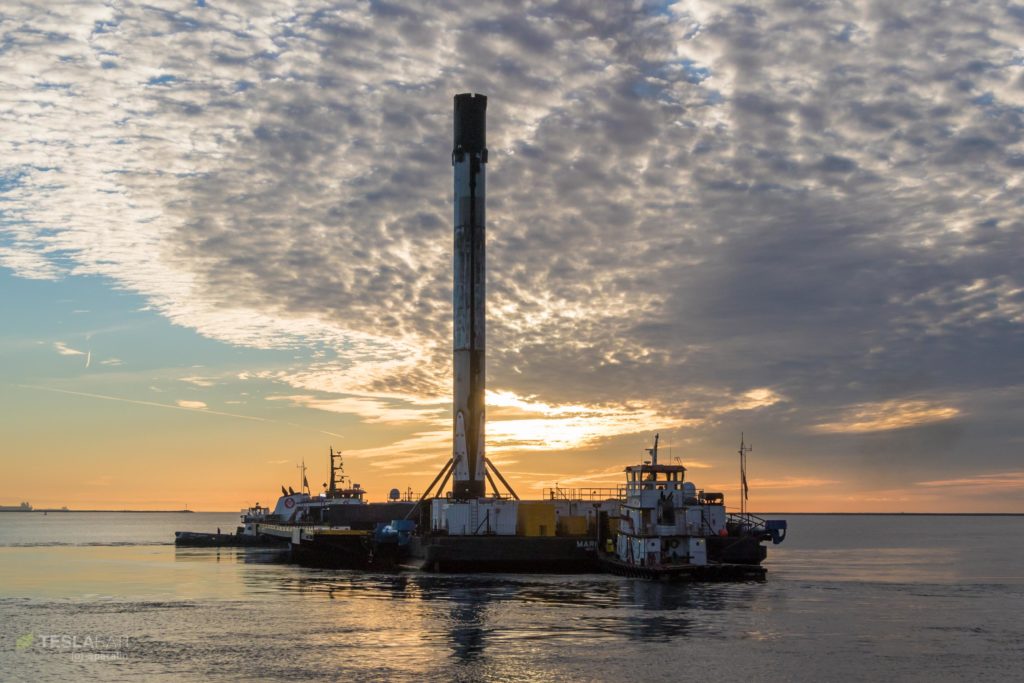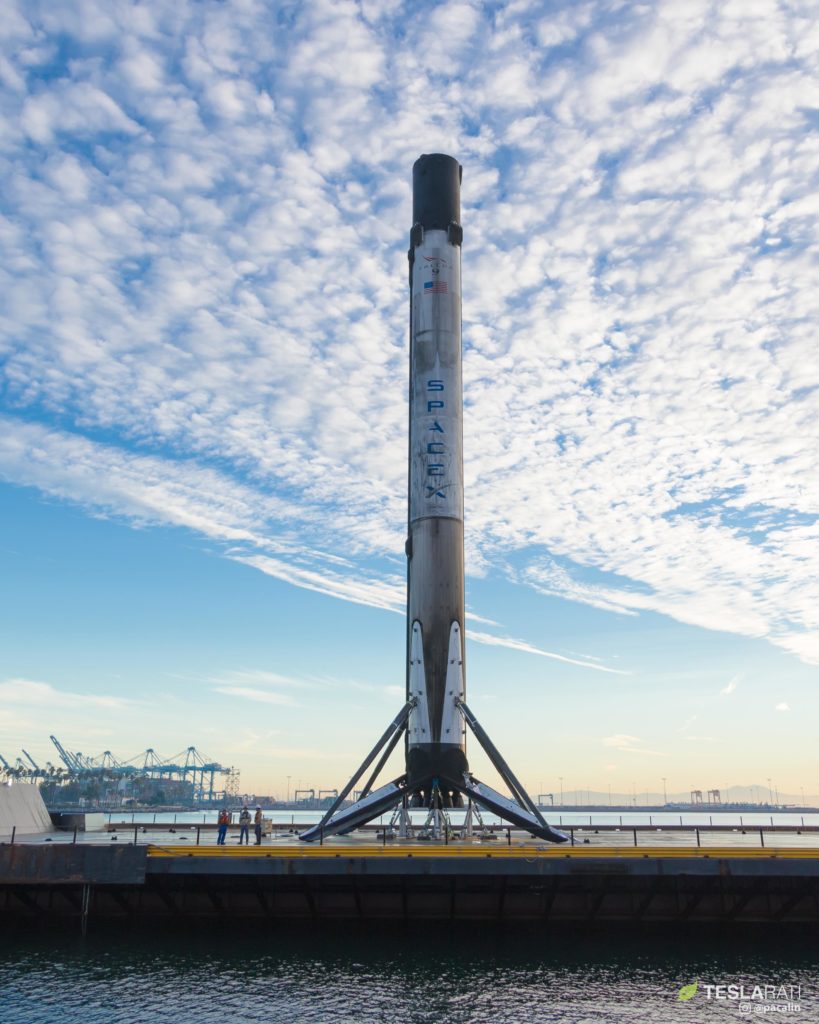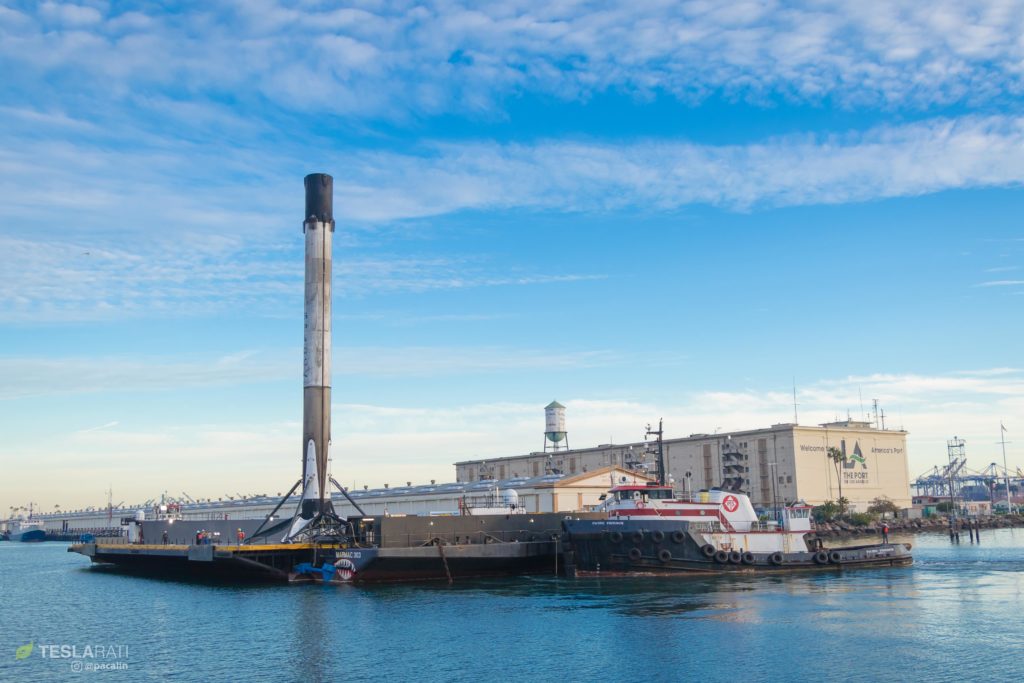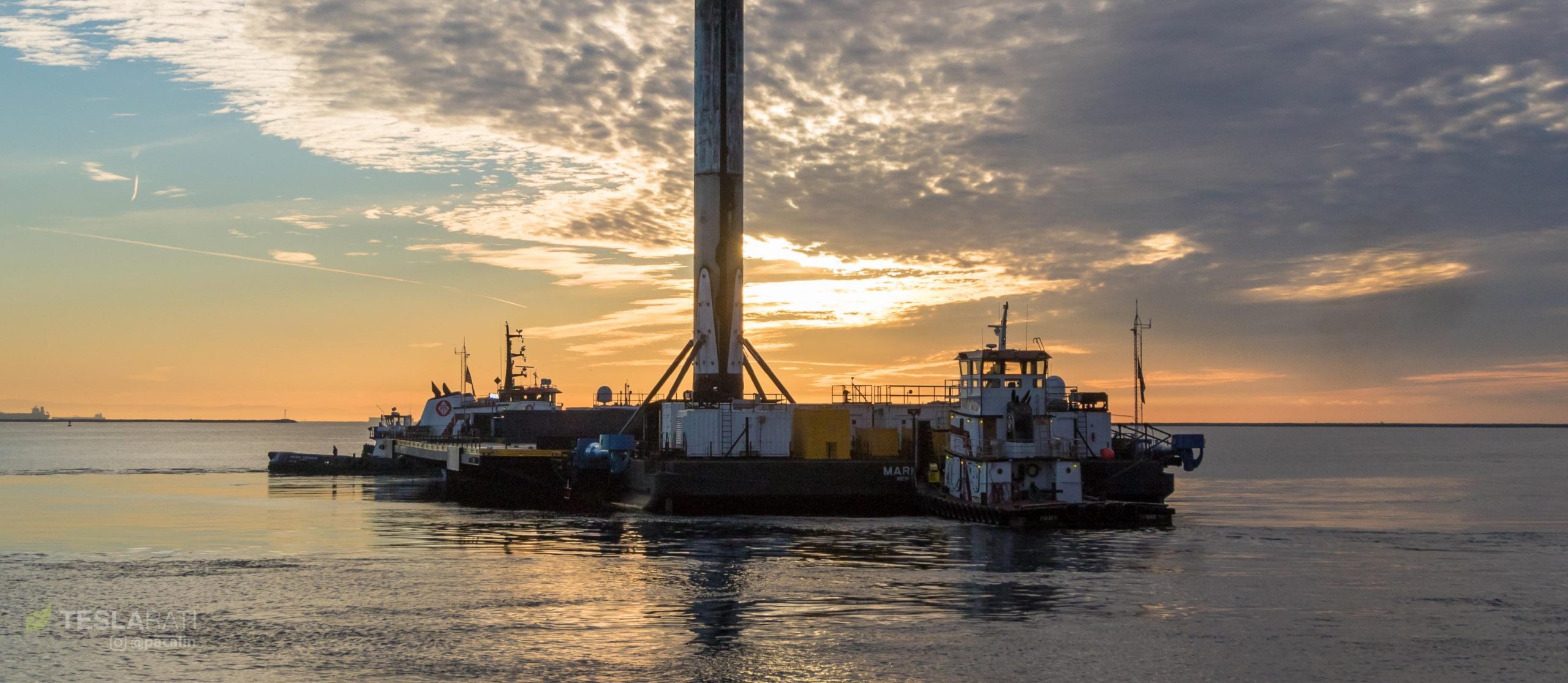
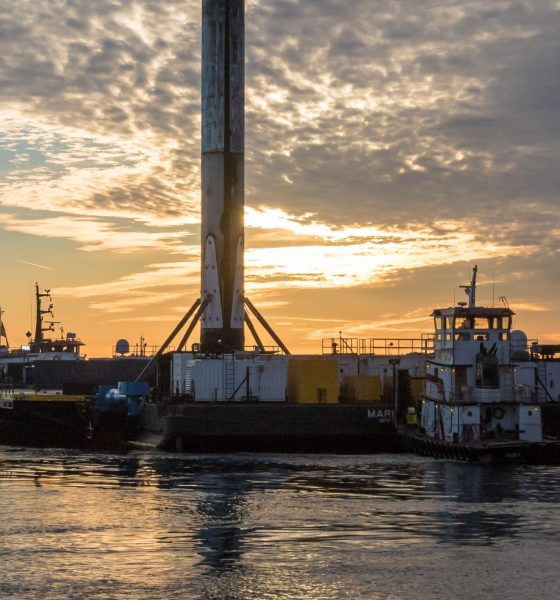
News
SpaceX Falcon 9 Block 5 booster ends launch #2 with spectacular dawn return
SpaceX Falcon 9 booster B1049 has completed its second successful launch and landing with a spectacular dawn return to Port of Los Angeles, where engineers and technicians will work to remove the rocket’s grid fins and landing legs and prepare the vehicle for transport to the company’s Hawthorne, CA factory and refurbishment facilities.
Once post-recovery processing is complete and B1049 is safe and snug inside one of SpaceX’s refurbishment facilities, the booster can be expected to be ready to perform its next (third) orbital-class mission perhaps just 2-3 months from now, whether or not there is a mission that needs its support.
Just Read the Instructions has now docked, carrying twice-flown Iridium-8 booster. Beautiful sunrise arrival. #spacex pic.twitter.com/OAi77wm3XT
— Pauline Acalin (@w00ki33) January 13, 2019
Just ~48 hours after the Block 5 booster’s second successful launch and landing, this time aboard drone ship Just Read The Instructions (JRTI) after supporting the historic Iridium-8 mission, JRTI pulled into Port of Los Angeles with Falcon 9 in tow, backlit by a picturesque California sunrise. In September 2018, the same booster (B1049) successfully completed its launch debut from SpaceX’s LC-40 launch pad in Cape Canaveral, Florida before landing safely aboard drone ship Of Course I Still Love You (OCISLY).
This marks the second time ever that a Falcon 9 booster has launched from both coasts (Cape Canaveral, FL and Vandenberg, CA) and landed on both SpaceX drone ships (JRTI and OCISLY), an event that will likely become increasingly common as the company’s growing fleet of Falcon 9 Block 5 boosters become increasingly flexible and interchangeable. It’s also equally possible that – over time – a sort of regional fleet of Falcon 9s will ultimately accumulate at each of SpaceX’s three launch pads, ensuring that there is always a rocket ready and waiting to launch a customer payload with short notice and minimal production or refurbishment-related delays.
- Falcon 9 B1049 and a few SpaceX recovery technicians serve as an excellent since of scale for launch photos. (Pauline Acalin)
- Falcon 9 B1049 returned to Port of Los Angeles after its second successful launch and landing in four months. (Pauline Acalin)
- Falcon 9 B1049 seen vertical at SLC-4E prior to its second launch, the eighth and final Iridium NEXT mission. (SpaceX)
Among many of Falcon 9’s almost sculpture-like qualities, Teslarati photographer Pauline Acalin’s photos of the booster’s return exemplify just how reliably unperturbed Block 5 appears after performing multiple orbital-class launches, far from a rocket that traveled to ~90 km (~56 mi) while reaching speeds of 1.9 kilometers per second (6830 km/h, 4300 mph). SpaceX now reliably reuses Falcon 9’s titanium grid fins and landing legs with little to no refurbishment or touching up between launches and should eventually be able to retract the rocket’s legs after recovery, further cutting down on processing and refurbishment times.
Greater reusability, greater reliability?
As of today, it’s unclear how big of a role Falcon 9 Block 5 booster refurbishment has played into several hardware-readiness-related delays to several recent flight-proven Falcon 9 launches (SSO-A, SAOCOM 1A, and Iridium-8), but it is ultimately a fundamental reality of all manufacturing that rushing or ‘expediting’ work will typically hurt product quality and reliability and generally widen the cracks that mistakes can slip through. Interestingly, having a truly large fleet of flight-proven Falcon 9 Block 5 rockets on hand could dramatically improve the overall launch-readiness of Falcon 9 and Falcon Heavy and minimize chances of processing delays across the board.
SpaceX employees may already be to a point where they can plausible take stock of the company’s already-significant fleet of flight-proven Falcon 9s (B1046-B1049) to decide which booster is closest to launch-readiness before assigning it to a given mission. With four proven boosters on hand as of January 2019, options are fairly limited and regionality is likely to factor heavily into which booster launches which mission – there is no real cushion if problems arise with a given rocket or its preceding launch suffers its own delays. However, once that Falcon fleet grows to something like 10 or 15 booster, SpaceX could conceivably be able to guarantee booster availability regardless of prior launch delays or a given rocket’s condition after landing.
- (Pauline Acalin)
- A bittersweet sunrise as Falcon 9 B1049 arrives in port. (Pauline Acalin)
- (Pauline Acalin)
- (Pauline Acalin)
This may well be far less sexy than SpaceX’s ultimate goal of drop-of-the-pin, 24-hour reusability for Falcon and BFR boosters, but the fundamental fact of the matter is that the company may well be able to derive a vast majority of that practice’s value by simply having a large, well-kept fleet of Falcon 9 boosters that are at least moderately reusable. For a hefty chunk of the probable near-term future, a large fleet of rockets each capable of launching every 30-60 days would likely be able to support launch cadences that are currently unprecedented for a single company or rocket (i.e. dozens of launches per year).
Time is money, of course, so minimizing the turnaround time of Falcon boosters will ultimately remain a major priority, especially as the prospect of Starlink launches loom.
For prompt updates, on-the-ground perspectives, and unique glimpses of SpaceX’s rocket recovery fleet check out our brand new LaunchPad and LandingZone newsletters!

News
Tesla China delivery centers look packed as 2025 comes to a close
Needless to say, it appears that Tesla China seems intent on ending 2025 on a strong note.

Tesla’s delivery centers in China seem to be absolutely packed as the final days of 2025 wind down, with photos on social media showing delivery locations being filled wall-to-wall with vehicles waiting for their new owners.
Needless to say, it appears that Tesla China seems intent on ending 2025 on a strong note.
Full delivery center hints at year-end demand surge
A recent image from a Chinese delivery center posted by industry watcher @Tslachan on X revealed rows upon rows of freshly prepared Model Y and Model 3 units, some of which were adorned with red bows and teddy bears. Some customers also seem to be looking over their vehicles with Tesla delivery staff.
The images hint at a strong year-end push to clear inventory and deliver as many vehicles as possible. Interestingly enough, several Model Y L vehicles could be seen in the photos, hinting at the demand for the extended wheelbase-six seat variant of the best-selling all-electric crossover.
Strong demand in China
Consumer demand for the Model Y and Model 3 in China seems to be quite notable. This could be inferred from the estimated delivery dates for the Model 3 and Model Y, which have been extended to February 2026 for several variants. Apart from this, the Model Y and Model 3 also continue to rank well in China’s premium EV segment.
From January to November alone, the Model Y took China’s number one spot in the RMB 200,000-RMB 300,000 segment for electric vehicles, selling 359,463 units. The Model 3 sedan took third place, selling 172,392. This is quite impressive considering that both the Model Y and Model 3 are still priced at a premium compared to some of their rivals, such as the Xiaomi SU7 and YU7.
With delivery centers in December being quite busy, it does seem like Tesla China will end the year on a strong note once more.
News
Tesla Giga Berlin draws “red line” over IG Metall union’s 35-hour week demands
Factory manager André Thierig has drawn a “red line” against reducing Giga Berlin’s workweek to 35 hours, while highlighting that Tesla has actually increased its workers’ salaries more substantially than other carmakers in the country.

Tesla Giga Berlin has found itself in a new labor dispute in Germany, where union IG Metall is pushing for adoption of a collective agreement to boost wages and implement changes, such as a 35-hour workweek.
In a comment, Giga Berlin manager André Thierig drew a “red line” against reducing Giga Berlin’s workweek to 35 hours, while highlighting that Tesla has actually increased its workers’ salaries more substantially than other carmakers in the country.
Tesla factory manager’s “red line”
Tesla Germany is expected to hold a works council election in 2026, which André Thierig considers very important. As per the Giga Berlin plant manager, Giga Berlin’s plant expansion plans might be put on hold if the election favors the union. He also spoke against some of the changes that IG Metall is seeking to implement in the factory, like a 35-hour week, as noted in an rbb24 report.
“The discussion about a 35-hour week is a red line for me. We will not cross it,” Theirig said.
“(The election) will determine whether we can continue our successful path in the future in an independent, flexible, and unbureaucratic manner. Personally, I cannot imagine that the decision-makers in the USA will continue to push ahead with the factory expansion if the election results favor IG Metall.”
Giga Berlin’s wage increase
IG Metall district manager Jan Otto told the German news agency DPA that without a collective agreement, Tesla’s wages remain significantly below levels at other German car factories. He noted the company excuses this by referencing its lowest pay grade, but added: “The two lowest pay grades are not even used in car factories.”
In response, Tesla noted that it has raised the wages of Gigafactory Berlin’s workers more than their German competitors. Thierig noted that with a collective agreement, Giga Berlin’s workers would have seen a 2% wage increase this year. But thanks to Tesla not being unionized, Gigafactory Berlin workers were able to receive a 4% increase, as noted in a CarUp report.
“There was a wage increase of 2% this year in the current collective agreement. Because we are in a different economic situation than the industry as a whole, we were able to double the wages – by 4%. Since production started, this corresponds to a wage increase of more than 25% in less than four years,” Thierig stated.
News
Tesla is seeing a lot of momentum from young Koreans in their 20s-30s: report
From January to November, young buyers purchased over 21,000 Teslas, putting it far ahead of fellow imported rivals like BMW and Mercedes-Benz.

Tesla has captured the hearts of South Korea’s 20s-30s demographic, emerging as the group’s top-selling imported car brand in 2025. From January to November, young buyers purchased over 21,000 Teslas, putting it far ahead of fellow imported rivals like BMW and Mercedes-Benz.
Industry experts cited by The Economist attributed this “Tesla frenzy” to fandom culture, where buyers prioritize the brand over traditional car attributes, similar to snapping up the latest iPhone.
Model Y dominates among young buyers
Data from the Korea Imported Automobile Association showed that Tesla sold 21,757 vehicles to the 20s-30s demographic through November, compared to BMW’s 13,666 and Mercedes-Benz’s 6,983. The Model Y led the list overwhelmingly, with variants like the standard and Long Range models topping purchases for both young men and women.
Young men bought around 16,000 Teslas, mostly Model Y (over 15,000 units), followed by Model 3. Young women followed a similar pattern, favoring Model Y (3,888 units) and Model 3 (1,083 units). The Cybertruck saw minimal sales in this group.
The Model Y’s appeal lies in its family-friendly SUV design, 400-500 km range, quick acceleration, and spacious cargo, which is ideal for commuting and leisure. The Model 3, on the other hand, serves as an accessible entry point with lower pricing, which is valuable considering the country’s EV subsidies.
The Tesla boom
Experts described Tesla’s popularity as “fandom culture,” where young buyers embrace the brand despite criticisms from skeptics. Professor Lee Ho-geun called Tesla a “typical early adopter brand,” comparing purchases to iPhones.
Professor Kim Pil-soo noted that young people view Tesla more as a gadget than a car, and they are likely drawn by marketing, subsidies, and perceived value. They also tend to overlook news of numerous recalls, which are mostly over-the-air software updates, and controversies tied to the company.
Tesla’s position as Korea’s top import for 2025 seems secured. As noted by the publication, Tesla’s December sales figures have not been reported yet, but market analysts have suggested that Tesla has all but secured the top spot among the country’s imported cars this year.
